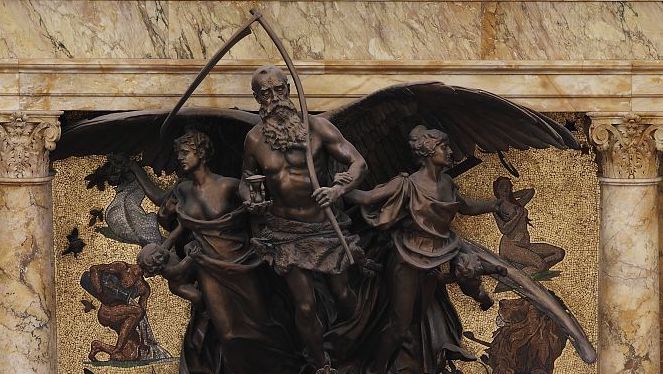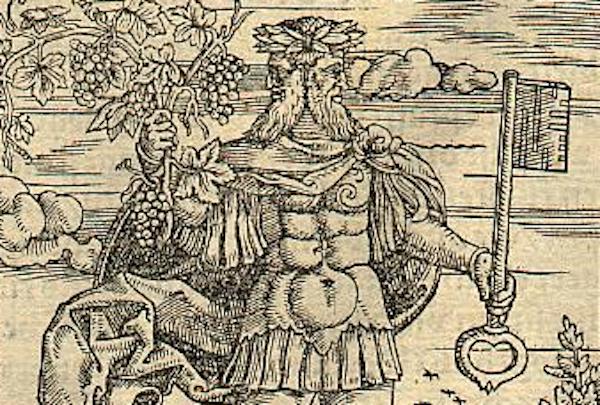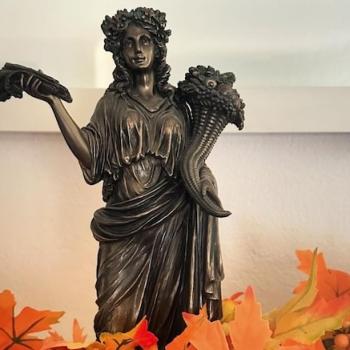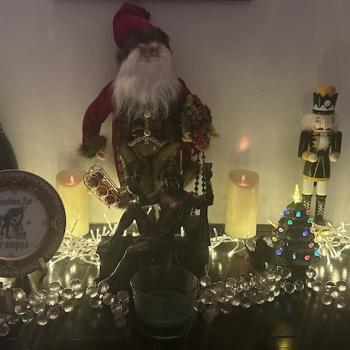Last year on the Patheos Pagan Facebook page I posted a meme on January 1st wishing everyone who likes our page a Happy New Year. A follower there was a bit upset about it because they seemed to believe that celebrating the New Year on January 1 is some sort of Christian tradition, or goes against the idea that there’s an established “Pagan” or “Witch” New Year.

It’s true that many Witches and Pagans celebrate the “New Year” starting on Samhain (somewhere between Oct. 30 and Nov. 1 depending on what tradition you follow), but this is a rather modern development, not an ancient one. The idea first appears in the book Celtic Folklore: Welsh & Manx by Welsh scholar Sir John Rhys (1840-1915) who wrote of early November:
“This is the day when the tenure of land terminates, and when servantmen (sic) go to their places. In other words, it’s the beginning of a new year.” (1)
The truth is, no one really knows what date the Irish-Celts used for the “New Year,” so in that sense, Samhain is as good a guess as any. I’ll admit, that as a society we tend to start and end a whole host of events in the Autumn, so Samhain makes some sense, and I’ll admit that I use this trope in rituals because it’s a familiar one.
For many Pagans, the Winter Solstice is the start of the “Pagan New Year.” Solstices are naturally occurring celestial events, and as the Winter Solstice marks the sun’s “growing stage” on the Wheel of the Year, there’s a certain amount of logic behind the idea. Personally, I’ve always been partial to Imbolc because the renewal begun at Yule tends to show tangible results by early February. (I don’t think there’s much more sunlight noticeable on Dec. 24 than there was on Dec. 21.)
There are a multitude of reasons to consider Ostara the start of the Witches New Year if we are looking at the alternatives. The astrological year begins at the Spring Equinox when the sun enters the constellation of Aries, the first sign of the Zodiac. For this reason, Persians celebrate their new year on the first day of Spring. Ostara is also traditionally associated with rebirth and new growth, perfect trappings for the new year.

And January 1 is as good as any other date for the start of a New Year from a Pagan perspective too. January 1 as the start of the New Year was established by Julius Caesar who facilitated the creation of the “Julian Calendar” which was first used on January 1 46 BCE. It’s worth noting that Julius Caesar was a pagan, making his date a pagan one. The Julian Calendar worked pretty well for a good long while, before it was adjusted by Pope Gregory XIII in 1582. (The Julian Calendar was just a little bit too long, resulting in some skewed dates as the centuries progressed.)
There are other solid Pagan reasons for January 1 as the start of the New Year. The month of January is named after Janus, who was the Roman god of doorways, beginnings, endings, time, and transitions. He certainly sounds like the right type of god to kick off a New Year, and January 1 was said to be sacred to him specifically. The January Kalends (a celebratory season that later influenced Christmas) served as a celebration of the New Year for several centuries and was when Roman consuls began their terms of office. (2) (And if Kalends sounds like calendar to you, you are right! It’s where the modern word calendar comes from.)
Most importantly as a Pagan I celebrate THE WHEEL OF THE YEAR, and since it’s a wheel, it’s a circle, meaning there are no absolute beginnings or endings. Celebrate the New Year when you want, how you want, and where you want. As for me I’ll probably be celebrating on New Year’s Eve because it makes as much sense as any other day.
NOTES
1. Rhys, John, Manx Folkore & Superstition (originally published as Celtic Folklore: Welsh & Manx in 1901), edited by Stephen Miller, Chiollagh Books, 1994, page 9.
2. Not all Romans, saw January 1 as the start of the New Year, some folks celebrated in March.

















